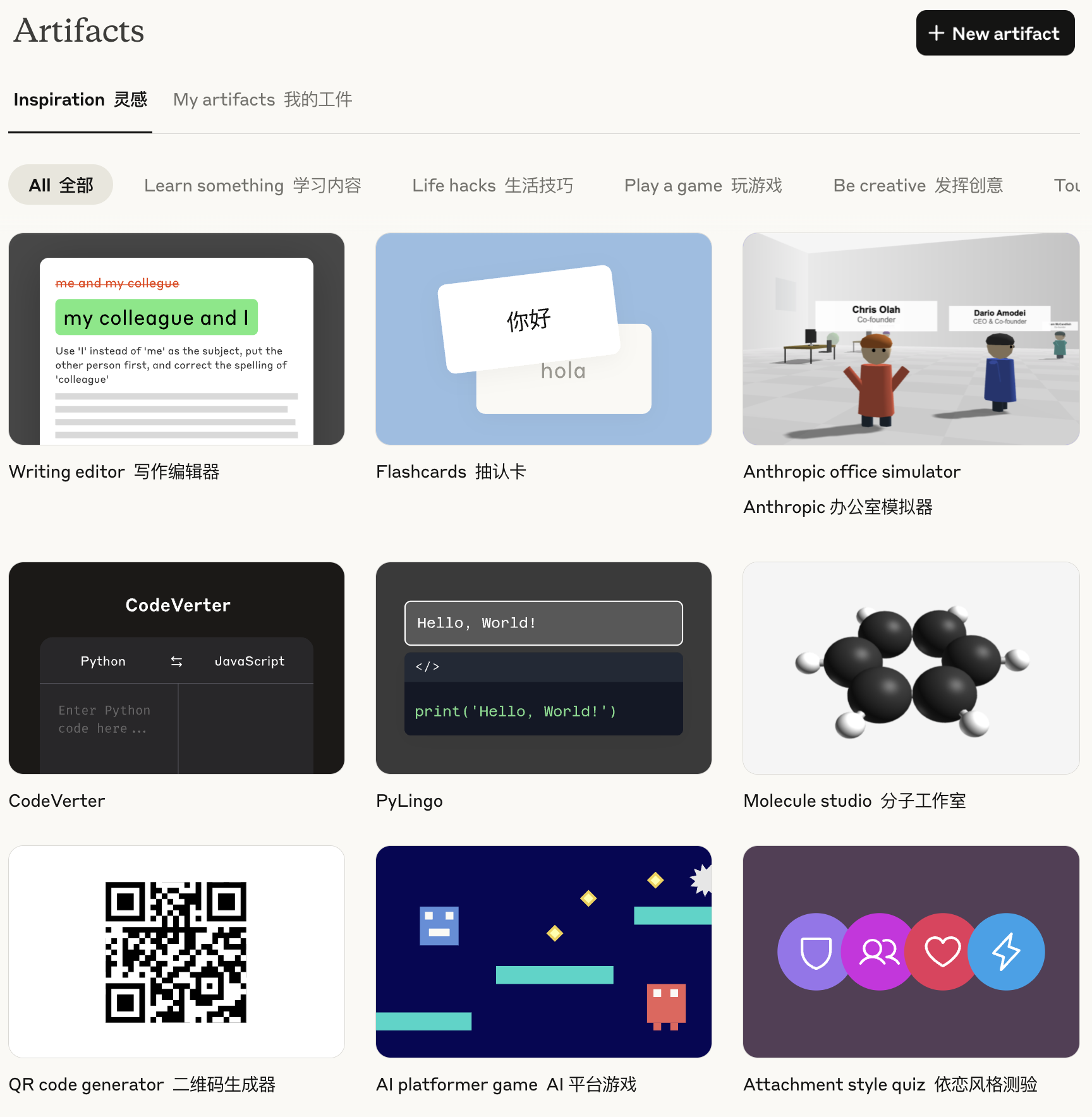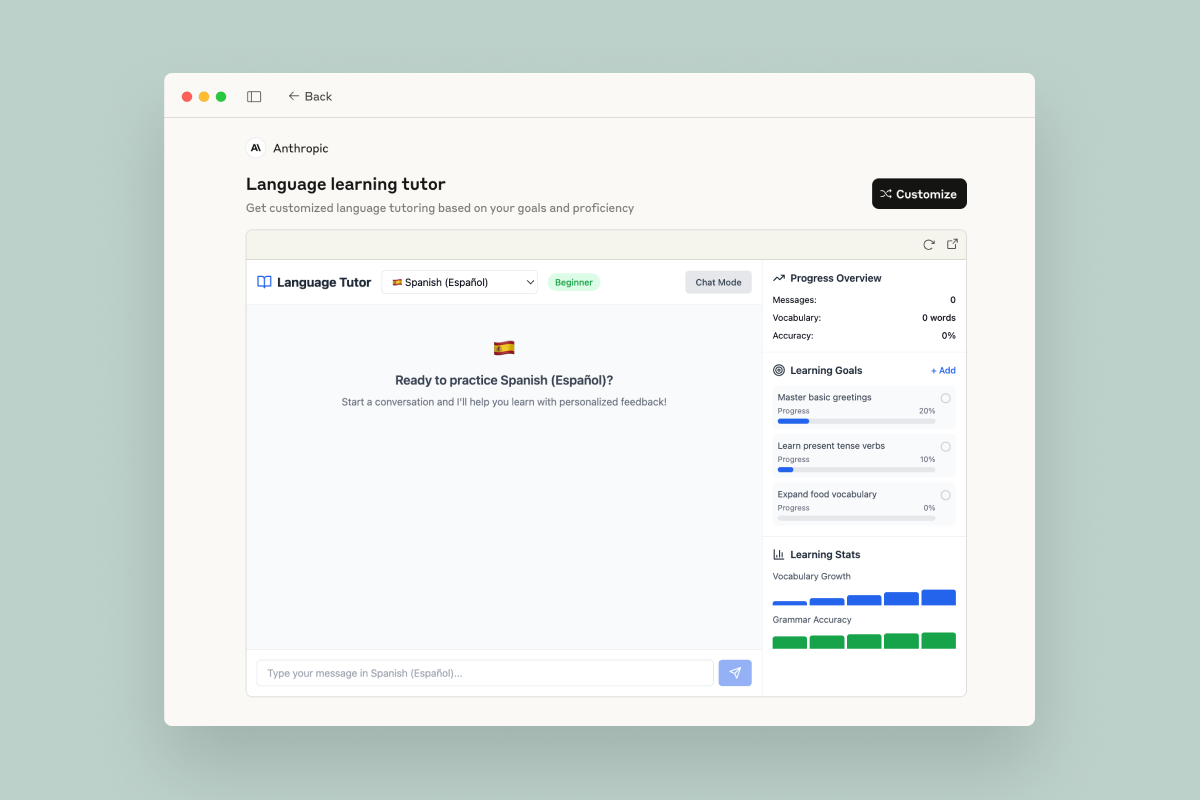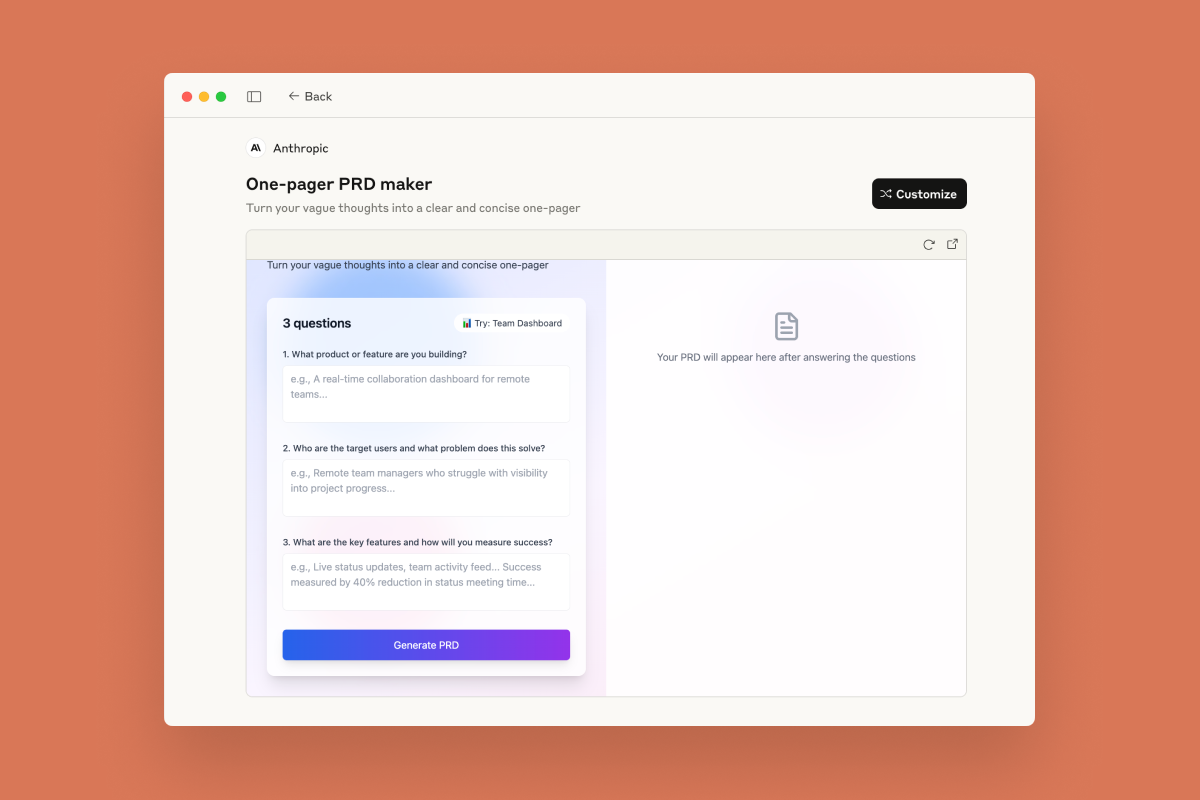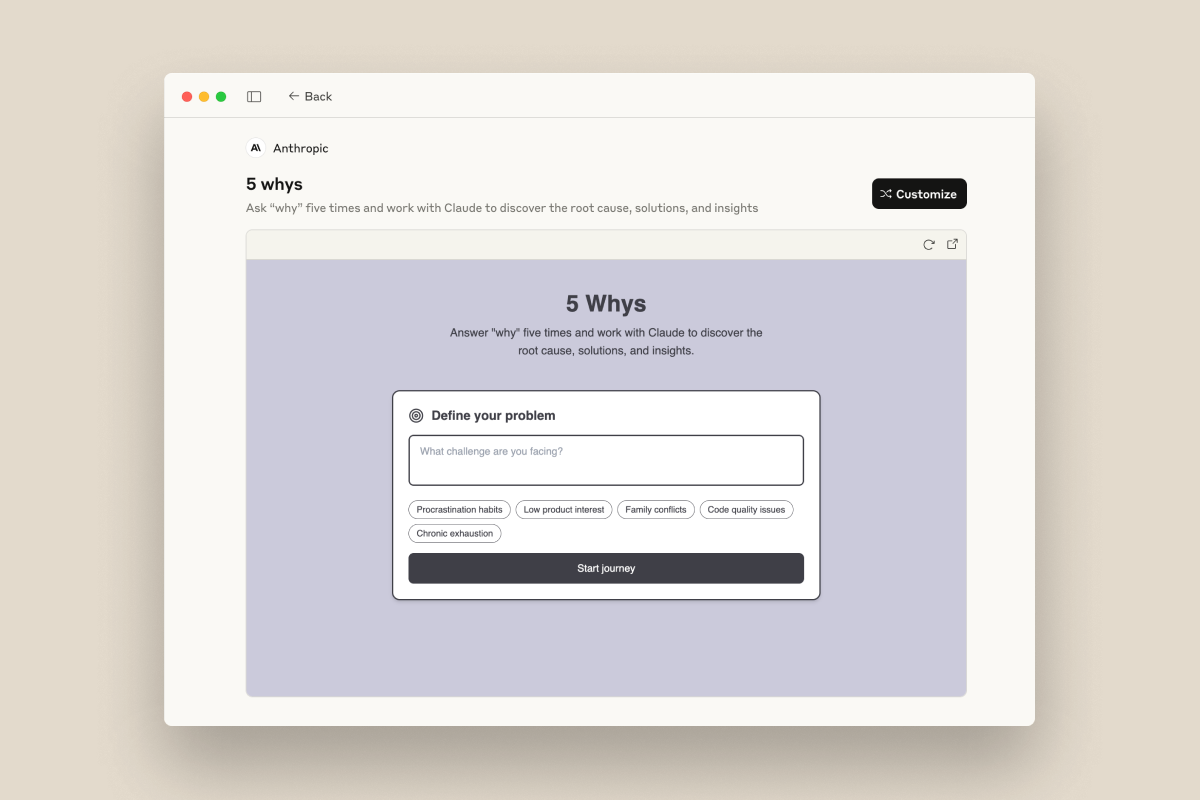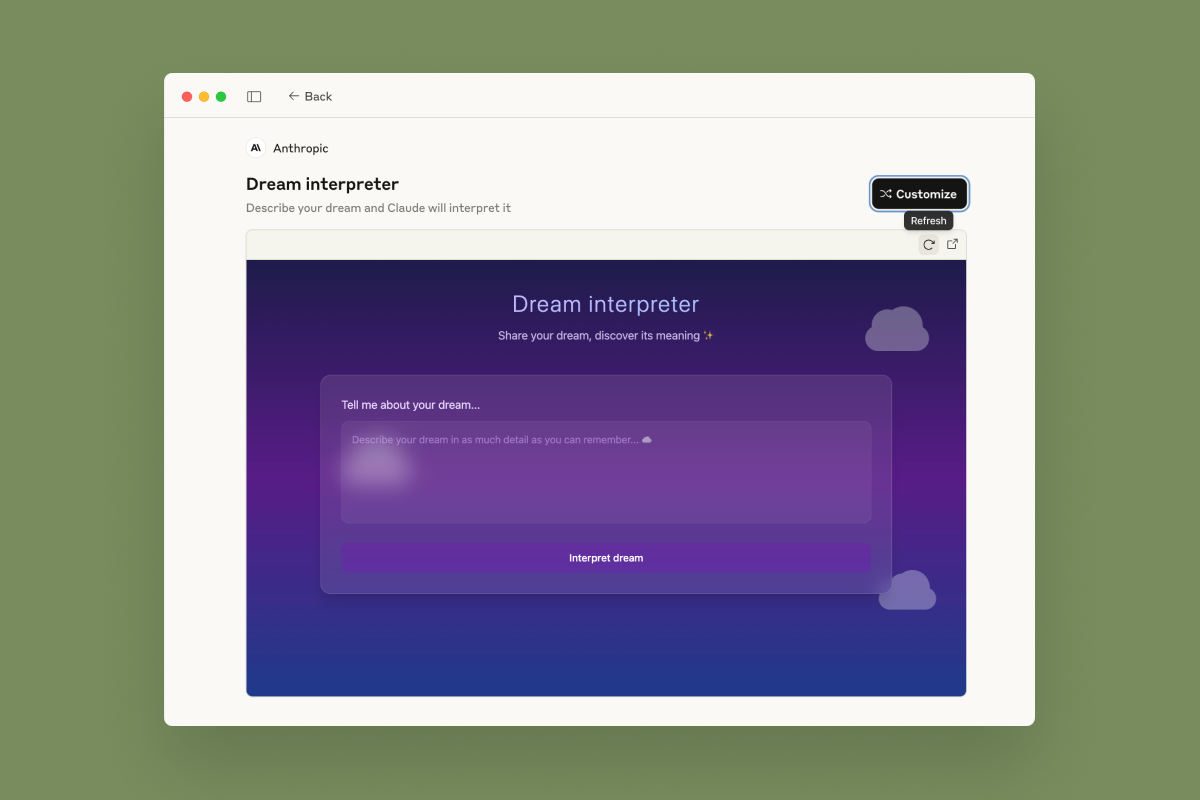- Artifacts creative spaces
- What’s Claude Artifacts?
- ** Principal function**
- Embedded AI ability into creation
- How to enable
- Use Claude Artifacts prototype to develop AI application guides
- ** How quickly to build, test and share Claude-based AI applications**
- Step 1: Open Claude’s “AI application mode”
- # prompt design advice:
- Step two: testing and replacing your Artifact
- Watch out:
- Don’t know what to do
- Step three: publish and share your AI application
- Step four: From prototype to product
- How to build Claude’s application efficiently?
- Summing up: Whose Gospel is Claude Artifacts?
Anthropic announces two completely new ways of creating as Claude: Artifacts creative space: Users can create, save and share in it what they make with Claude. For example, you can create a rhythm machine with Claude (as shown in the video) and share it with others. **Alimentation: ** When you create these things, Claude’s AI capabilities can be embedded directly, without applying for API, and you can share the applications you create. For example, you create a learning tool, Claude’s AI can provide personalized guidance or answers based on the skill level of the user. Others can use them through their Claude accounts when you share these embedded AI capabilities. These use accountants to subscribe to them, not yours. So the costs and rights of use between the creators and users are balanced.
Artifacts creative spaces
What’s Claude Artifacts?
Claude Artifacts is an interactive AI application construction module launched by Anthropic, which can be understood as a runable “microapplication” or prototype system with Claude’s intelligence ** generated in the Claude Chat interface. ** Features:**
-
** No deployment or writing of codes**: No API Key configuration, nor any concern about deploying servers or calling charges.
-
Local run + Quick Share: Runs directly at Claude interface, and clicks on publication to share other people’s experiments.
-
** There is some logic and interactivity**: although a lightweight prototype, it is able to respond to user input and perform basic logical operations.
** Principal function**
-
Provide a centralized interface to manage all Claude-generated projects and creations.
-
Users can ** view selected examples**.
-
All Artifact projects can be ‘fork’ - i.e. copied and personalized.
-
Includes a variety of templates, such as games, flashcards, programming tools, creative exercises, etc. (see screenshots and videos).
-
** Use of scene** Educational applications: generating interactive learning tools
-
Programming learning: Quick fix code small tools or demonstration projects
-
Creative writing and game design: design AI participatory interactive content
Embedded AI ability into creation
The Artifacts internal has been integrated into the Claude model, and no further API Key or backend service is required. Your use of Claude’s Artifact is actually an exercise in the reasoning of the model itself, as long as you operate within Claude’s platform, the amount used is assigned to your account, and no longer separately.
-
** Core function** Users can use Claude’s intelligence** to embed AI functions** directly in their work and create functional AI applications.
-
After the application is issued, users are required to use their own Claude account login** to achieve cost independence (no token or amount of the original author).**
-
Let me give you an example: Assuming that you made an “AI Emotional Analytic Small Tool” with Claude Artifacts, you published a link: You send a friend A.
-
Friends A clicks on the link and logs into their Claude account;
-
Friends A begin to enter text, Claude analyses emotions and returns results;
-
** These operations consume friends A’s own subscriptions, not yours**.
** Features**
-
Supports full functionality App building, using Claude’s ability as the “backend intelligence core”.
-
For creators, developers and individuals who want to deploy AI applications.
-
In a form similar to “AI — services”, the original author is not required to bear the operating costs.
How to enable
-
All Claude Free, Pro and Max users can open the function.
-
Method of operation: Enter Claude settings, ** Start test function for “Create AI-powed artifacts”**.
-
Entry: https://claude.ai/artifacts
Use Claude Artifacts prototype to develop AI application guides
** How quickly to build, test and share Claude-based AI applications**
In the past, we used to find it difficult to do an AI application: you had to do API keys, set up servers, calculate costs, process currents, and be careful not to step on a pit. Now, with Claude’s artifacts, it’s much easier. It’s like a little program engine in Claude – no need to deploy servers, no API keys, Claude’s own magic interface. You can move it with prompt, you can start doing something right away, and you can share it with one key when you’re done.
Step 1: Open Claude’s “AI application mode”
Opens Claude’s website and opens “Create AI-powed artifacts” in settings; When it’s finished, Claude will be able to identify what you want to create as an application prototype with AI capabilities, not as a mere conversation; With a chestnut, you can just say, “Help me make a chat robot, and every time a user says something, it boasts about each other.”
-
Explain your intentions.
-
Auto Generate Artifact with interactive features (click on right panel)
-
Allow you to interact with Artifact.
# prompt design advice:
-
Clear expression of input and desired output
-
The need for multiple rounds of dialogue, format constraints, style, etc.
-
Example: “User inputs a sentence, Claude returns a gentle sentence (Positive / Neutral / Negative) encouraging and labelling emotional types.”
Step two: testing and replacing your Artifact
- Real-time testing Enter the contents of the Artifact panel on the right to see whether the response meets expectations.
- Fork & Edit (create branch overlap) Unsatisfactory with the results? It could:
-
Go back to any dialogue record and click on “Edit”
-
Modify Prompt or description to generate a new version of Artifact
-
Support multi-version parallel testing without prejudice to the original version
Watch out:
Claude’s Artifact currently supports text completion logic suitable for AI applications such as content generation, classification, summing up, dialogue simulation, etc.
Don’t know what to do
Claude supports artifacts not only as tools, but also as creative works. You can start in these directions:
- ** Teaching Assistant**: For example, interactive mentors or learning partners understand the context of user learning needs. For example: a code review assistant who can provide detailed feedback based on predefined styles and best practices; or a language learning tool that allows you to talk and practice in the preferred language.
- ** Content generation tool**: help with brainstorms, help with the development and refinement of content creation, and reduce duplication of effort. For example, organize internal Slack posts into files suitable for sending to LinkedIn, or convert input into a page of product demand documents (PRD).
- Analysis and decision support tools: Smart tools to process user data and support decision-making through dialogue to enhance organizational efficiency. For example, help teams to deepen their analysis of issues based on the “ Why “ framework.
- Incentives: The best applications often come from wonders and unique perspectives. For example, a dream machine, a love book generator, a film name recommendation machine… your brain hole is big enough for Claude to help you land.
Step three: publish and share your AI application
Claude artifacts is a “prototype design” that doesn’t require you to board a server or register API key, click “Publish” and you can generate a link that can be sent to friends, colleagues and even posted on social platforms.
-
When someone opens it, it’s your current version;
-
The other party can copy and adapt without affecting your original code;
- You can cancel sharing or managing shared works at any time.
Click “Public” to publish applications The Artifact panel has a “Publish “ button at the upper right corner, which generates the only access link.
- Sharing links to be tested by others
-
Others click the link to run your AI application
-
The modification will not affect your original version.
- Could be used for product demonstration, user testing or team collaboration development
- View what has been published All artifact applications you have published can be found on the Claude platform ‘s ‘Published ‘ tab page.
Step four: From prototype to product
Artifacts is an ideal platform for fast testing and displaying ideas, but when you’re ready to go online for a formal product, although Artifact cannot itself deploy into a product, you can: Export Code Claude automatically generates a reusable structure code (HTML/JS/CS) in Artifact. Import local development environment Copy code for enhanced development in your familiar development environment (e.g. VSCode, Replit):
-
Add external API call
-
Expand front-end interactive style
-
Integrated database or back-office services
Claude Code Help
Use the Claude Code model to assist you in the engineering of code structure optimization, functional development, Bug restoration, etc.
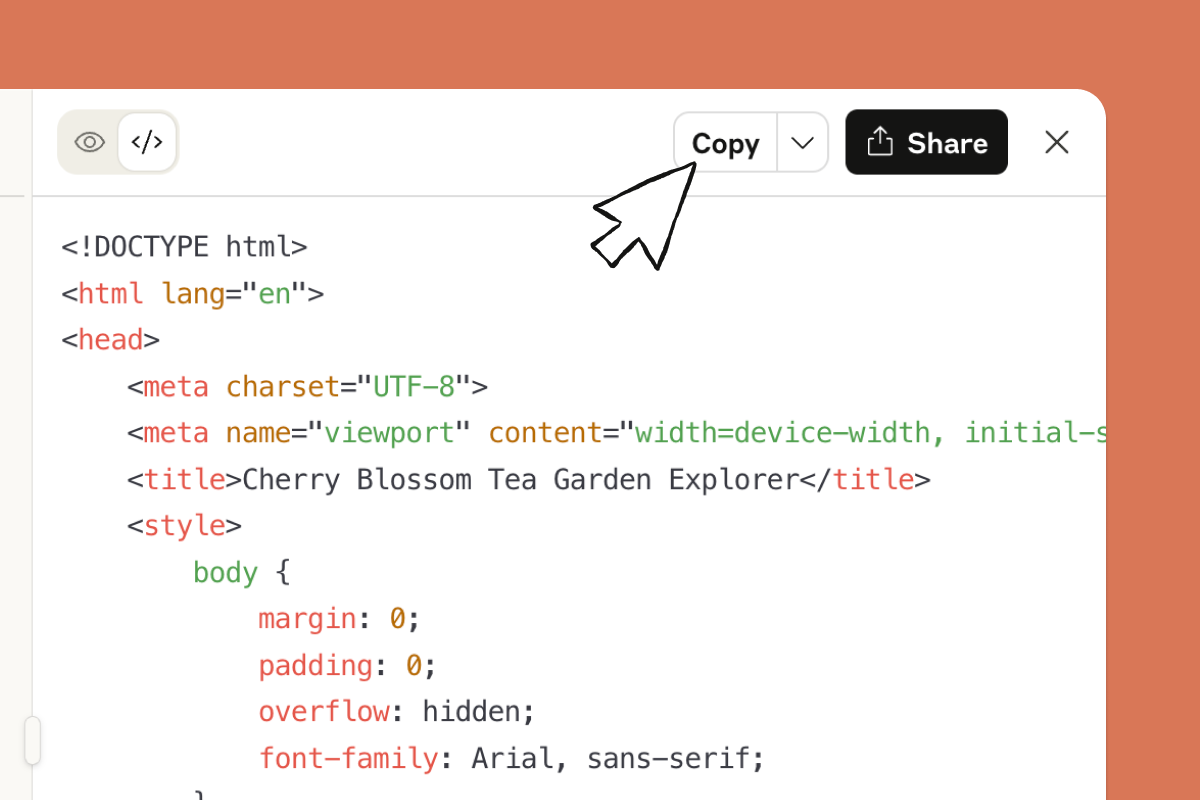
How to build Claude’s application efficiently?
There are practical techniques that can make you more rapid:
-
** Let Claude in turn interview you**: tell him you have an idea that will ask you some key questions and lead the way;
-
** Use more “please modify” such natural language instructions**: for example, “help me change to a blue theme”, “limit the response to no more than 100 words”, “add a copy button”;
-
** tune bugs can also be used as chats**: for example, “This calculator cannot count decimals”, “This conversation has a problem jumping,” Claude will understand and fix it;
-
** Bold branch test**: Create branch version by “editing” at any time, try different logic and do not have to destroy the original version.
Summing up: Whose Gospel is Claude Artifacts?
Claude Artifacts is a powerful tool for non-programmers and product prototype designers. It allows you to validate the AI product idea at minimal development cost and quickly present it as an interactive experience. Want to build AI applications from 0 to 1? This is the lightest and fastest way.
-
** Unable to write codes but creative**: Claude can help you land from 0 to 1 quickly;
-
** Product manager, operator, content creator**: no longer limited to “one idea but no one to do it”
-
Developer: new ideas can be tested quickly and no longer start from blank pages;
-
** Entrepreneur**: light asset validation MVP, fast to fly.

